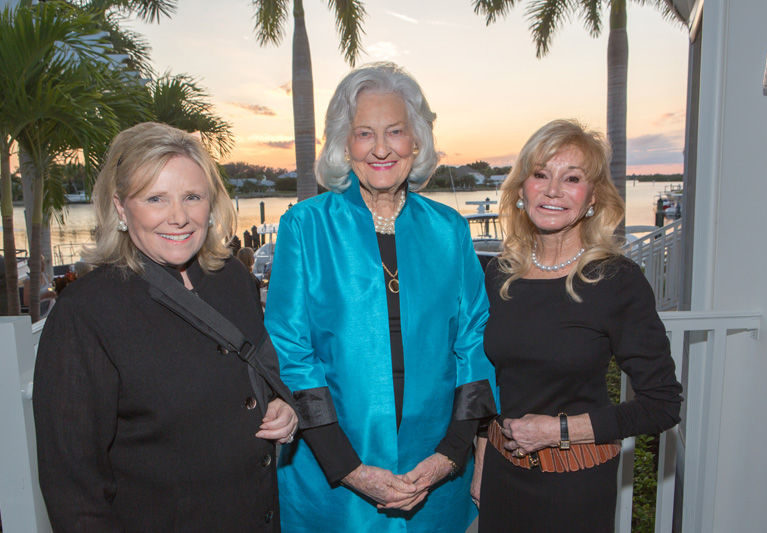
Scientists, volunteers, supporters and field technicians packed Quail Valley River Club last Monday evening for “We’re Solving the Mystery,” a gala fundraising dinner to benefit the Old Vero Ice Age Sites Committee (OVIASC). The event was co-chaired by Patty Rennick and Connie Pitcher, with Helen Post, who has been instrumental in leading philanthropic endeavors for the organization, chosen as honorary chairwoman.
“My husband was tremendously interested in archeology,” said Post, referring to the late Richard Post. “We had a farm that had lots of Indian relics on it in New Jersey on the Delaware River and he used to have many conversations about it. Because it was so dear to him, it was dear to me.”
Guests enjoyed a beautiful sunset over the Indian River lagoon before entering the dining room, where beautiful tables had been designed by William Bainbridge Steele. After a short video about the noteworthy dig, they dined on filet mignon followed by a surprise dessert by Executive Chef Joe Faria – a sumptuous mousse cake atop an illuminated ice block.
Lead archeologist James Adovasio and site archeologist Andy Hemmings along with 13 field technicians from seven colleges were on hand to answer questions about their progress, which has been documented and photographed in meticulous detail.
Adovasio said having the students interact with patrons and supporters was an important aspect of their overall education. Each is working toward master’s degrees in archeological sciences, and will one day have to interact with donors on future projects.
“The actual tedium of archeology is such that you savor moments like this,” said Adovasio. “Not only are they rarely exposed to something like this, but adjusting to the social circumstances is part of their educational process. If we cannot translate what we do to the public, whose tax money we are spending, we should not be doing it.”
“I think this is a very fascinating site, mostly because of the community involvement,” said field tech Sarah Majors. “That is unusual and it’s a really special aspect.”
“Archaeology is a destructive science so unlike other hard sciences, where you can run the experiments as many times as you want, in archaeology you have one chance to run an experiment,” explained lead field technician John Duggan, who has been with the dig for the past two years.
He and fellow techs Ryan Gerstner and Richie Rosencrance said they enjoyed the change of atmosphere and the chance to dress up.
“If you look at our hands there are still calluses and dirt on our fingers,” joked Rosencrance. “It takes a few days to wash off that dirt … it is Pleistocene dirt. We call this clean dirt. It is meticulously documented and we know where it comes from.”
Hemming said that actual excavations would be the last part of the puzzle, perhaps 15 to 20 years from now. Everything will first be scanned long before the site is physically excavated.
“We will probably see things exactly in their place before one object has been dug for,” predicted Hemming. He too reiterated that the amount of community involvement is unprecedented.
“People in general are interested in archeology, but in this case the thousands who have come out to the site in the last two years, and about 800 who have come to volunteer – some every day for eight or nine hours – that community support is unparalleled. The level of hands-on involvement, the sponsorship and the partnership with not just the Old Vero Ice Age site committee but also the broader community is fundamentally unlike any site we have ever worked on.”



